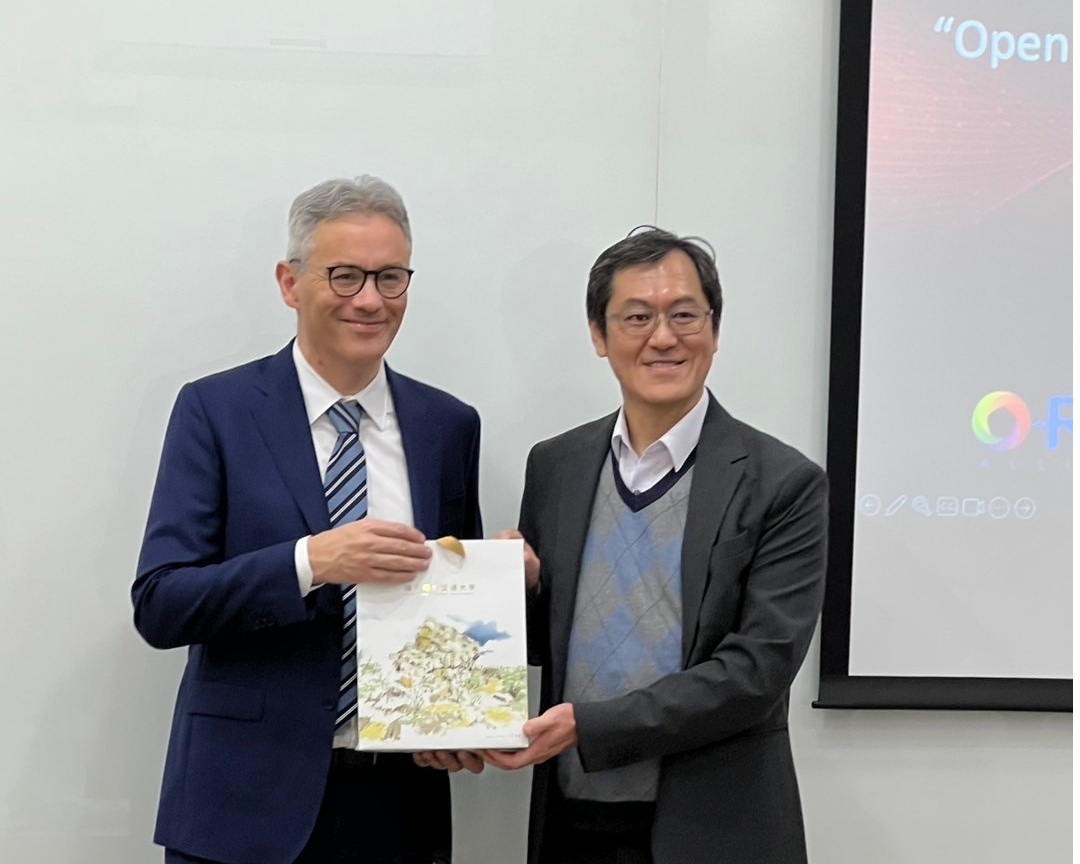Speech by Dr. Tommaso Melodia: Open 6G: Towards Open, Programmable, and AI-Powered NextG Wireless System
- Published on
- Author
- 魏彣芯

Professor Tommaso Melodia is the William Lincoln Smith Chair Professor in the Department of Electrical and Computer Engineering at Northeastern University, USA. He is the founding director of the university's Institute for the Wireless Internet of Things (WIoT) and serves as the Director of Research for the PAWR Project Office, which oversees the U.S. national wireless research initiative. He earned an integrated Bachelor's and Master's degree (Laurea) from the University of Rome La Sapienza and received his Ph.D. in Electrical and Computer Engineering from the Georgia Institute of Technology in 2007.
Professor Melodia is an IEEE Fellow and recipient of the NSF CAREER Award. In 2018, he was honored with the Søren Buus Outstanding Research Award, the highest recognition from Northeastern's College of Engineering. His research has a strong foundation in modeling, optimizing, and experimentally validating wireless networks and IoT systems, and has been consistently supported by institutions such as the U.S. NSF, Air Force Research Lab, Office of Naval Research, DARPA, and Army Research Lab. He is also deeply involved in the academic community, having served as Technical Program Chair of IEEE INFOCOM 2018, General Chair of IEEE SECON 2019, ACM Nanocom 2019, and WUWNet 2014, as well as an editor for journals including IEEE Wireless Communications and IEEE Transactions on Mobile Computing.
In this lecture, Professor Melodia provided an in-depth analysis of the technological challenges and research directions of 6G, emphasizing that future wireless systems will evolve toward open, programmable, and AI-powered architectures. He pointed out that the current network architectures are highly centralized and closed, dominated by a few large equipment vendors. This not only stifles innovation but also creates significant barriers to upgrading due to vendor lock-in. Closed architectures hinder observability within networks and prevent rapid adaptation to service demands, significantly limiting flexibility in network deployment and monetization of new services.
To address the increasing complexity of wireless environments and application demands, Professor Melodia introduced the concepts of Open RAN and Open 6G architectures. These involve modularizing the RAN into Radio Unit, Distributed Unit, and Centralized Unit, and virtualizing them onto edge or cloud platforms. By adopting open interfaces and Software Defined Networking (SDN) principles, network functions become observable, controllable, and automatically deployable. He further elaborated on the O-RAN Alliance's introduction of xApps (near-real-time control applications), rApps (non-real-time policy applications), and dApps (Distributed Applications). Through dApps, users can deploy custom-defined logic directly onto physical base stations, enabling low-latency real-time control.
The talk also covered three key paradigms of AI integration with wireless networks: AI for RAN (optimizing RAN behavior using AI), AI in RAN (AI sharing the same computing platform with RAN), and AI on RAN (running AI applications such as LLM inference or visual analytics at the edge). Professor Melodia emphasized that AI is not just a performance enhancement tool but a driving force for edge computing, enabling broader applications in future mobile networks.
To support open architectures and AI development, the Northeastern team has built several experimental platforms, including Colosseum, a wireless communication emulator with 256 programmable software-defined radios; Arena, an open wireless testbed; and the X5G test environment, which combines GPU acceleration with commercial hardware. These platforms enable a full experimental pipeline from simulation to real-world testing and from modeling to inference, supporting end-to-end Digital Twin testing and AI model training. Professor Melodia demonstrated how AI models trained in the Colosseum simulated environment can be directly deployed in Over-the-Air (OTA) transmission in real-world wireless scenarios. These experiments validated the feasibility and potential of AI control modules for open wireless networks. With this architecture, we can flexibly meet diverse demands in real-world systems without being constrained by specific hardware or environments.